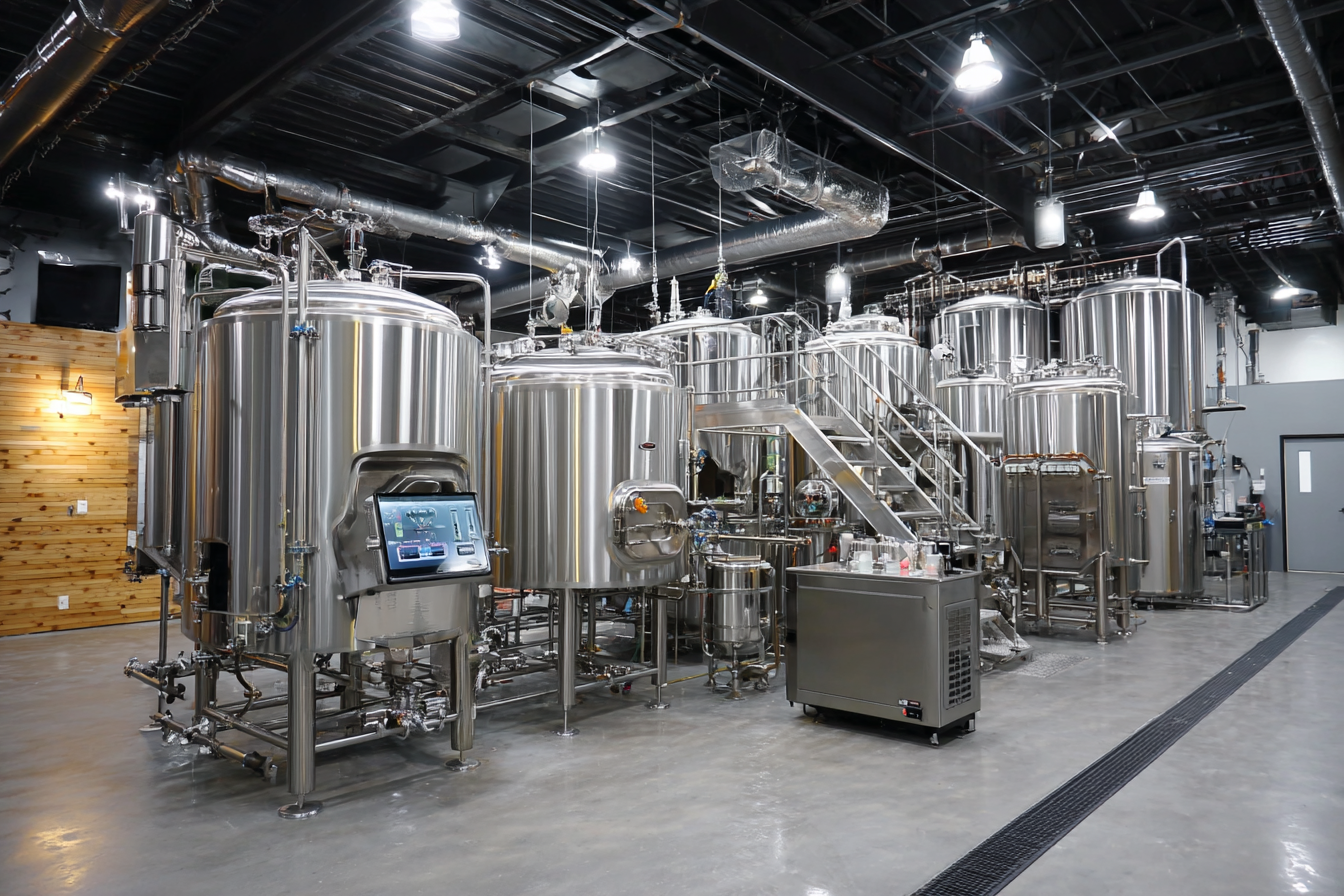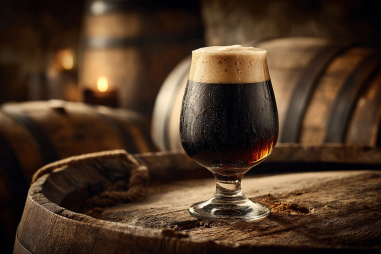Brewing American Style Pilsners is a rewarding endeavor, blending tradition with a touch of modern American influence to create crisp, refreshing beers that many enthusiasts enjoy. Whether you’re a homebrewer eager to craft your first batch or a small-scale professional brewer aiming to perfect your pilsner production, choosing the right brewing equipment is vital. This guide will walk you through the essential gear and setup considerations to help you produce high-quality American Style Pilsners every time.
Introduction to Brewing American Style Pilsners
American Style Pilsners are a lighter, crisper adaptation of the traditional Czech and German pilsners, offering a refreshing balance of malt sweetness and hop bitterness with a clean finish. Their subtle hop character often uses American hop varieties, lending unique floral and citrus notes. To achieve this, brewers need precise control over the entire brewing process, especially fermentation temperatures and sanitation. Selecting equipment tailored to these requirements will ensure the best possible results and consistency in your brews.
Basic Homebrewing Equipment Needed
Starting with the right basic equipment is key for any homebrewer targeting American Style Pilsners. Here’s a list of the core tools you’ll need:
- Brew Kettle: A large stainless steel or enamel kettle with a capacity of at least 5 gallons. For homebrewing, a kettle with a built-in thermometer and valve will help with monitoring and draining wort.
- Fermentation Vessel: A food-grade plastic bucket or glass carboy, usually around 5 gallons in size.
- Airlock and Stopper: To allow gases to escape during fermentation while keeping contaminants out.
- Basic Thermometer: To monitor mash and fermentation temperatures accurately.
- Racking Tube and Siphon: For transferring beer during bottling and conditioning stages without disturbing sediment.
- Bottles or Kegs: For packaging your finished product.
- Hydrometer: To measure specific gravity and track fermentation progress.
This equipment forms the foundation for any brewing setup and will allow you to brew quality pilsners with attention to detail in the process.
Specialty Equipment for Lager Styles
Because American Style Pilsners are lagers, they require longer and cooler fermentation periods than ales, which can necessitate some specialized equipment to maintain ideal conditions:
- Temperature-Controlled Fermentation Chamber: Lagers generally ferment at temperatures between 45–55°F (7–13°C). A dedicated fermentation fridge or freezer equipped with a reliable temperature controller can maintain these cooler temperatures consistently.
- Mash Tun: For all-grain brewers, a mash tun helps maintain a steady temperature during mashing, essential for converting starches effectively. Insulated mash tuns or those with built-in false bottoms and temperature control improve this step.
- Wort Chiller: Rapidly cooling the wort after the boil is crucial to reduce the risk of contamination and improve clarity. Immersion, plate, or counterflow wort chillers work well depending on your setup size.
These tools help create the precise environment lagers, including American Style Pilsners, need to develop their distinct clean flavor profile and crisp finish.
Temperature Control Importance
Temperature control is the cornerstone of lager brewing success. Unlike ales, lagers ferment at lower temperatures which slows fermentation, reduces the production of esters and other off-flavors, and results in a clean, well-defined taste. Poor temperature control can lead to undesirable characteristics such as excessive fruitiness or contamination.
For homebrewers, investing in a fermentation chamber or temperature-controlled environment can dramatically improve the quality of the final beer. Additionally, temperature control plays a role during the lagering phase—the period after primary fermentation where the beer is cold-conditioned. A stable cool temperature (typically near 32–35°F or 0–2°C) smooths out flavors and enhances clarity, which is critical for the pilsner style.
Fermentation Vessels and Conditioning Tanks
Choosing the right fermentation vessel can make a huge difference in the brewing process and final product. Here are some options suitable for American Style Pilsners:
- Glass Carboys: Popular among homebrewers for their inert properties and ease of cleaning, but fragile.
- Surgical Stainless Steel Conical Fermenters: Used by more advanced homebrewers and small breweries; these vessels simplify yeast harvesting and allow for clearer beer.
- Plastic Brew Buckets: Economical and lightweight, but may scratch easily and harbor bacteria if not cleaned properly.
- Dedicated Lagering Tanks: For small breweries, having separate vessels specifically for the lagering/conditioning stage maximizes quality and reduces risk of contamination.
Choosing vessels that provide adequate volume, ease of cleaning, and functional features such as conical bottoms, valves, or temperature jackets is beneficial, especially if you plan to brew repeatedly or scale production.
Cleaning and Sanitation Tools
One of the most important aspects of brewing, especially tippling to the crisp flavors of American Style Pilsners, is stringent cleaning and sanitation. Even minor contamination can spoil the subtle balance pilsners require. Essential cleaning and sanitation supplies include:
- Brewing-Specific Cleaners: Such as PBW (Powdered Brewery Wash) or oxygen-based cleaners to remove organic residues.
- Sanitizers: No-rinse sanitizers like Star San or iodophor are perfect for sanitizing equipment contact surfaces before brewing and packaging.
- Cleaning Brushes and Sponges: Appropriate sizes for kettles, fermenters, and bottles.
- Heat Resistant Gloves and Proper Racks: For safe handling of hot equipment.
Building a routine of thorough cleaning and sanitizing ensures that your pilsners remain uncontaminated and maintain their desired delicate flavor profile.
Scalable Setups for Small Breweries
If you’re a small-scale or craft brewery keen on producing American Style Pilsners, scalability and efficiency in equipment choices become crucial. Unlike simple homebrewing, small breweries require fermenters and conditioning tanks that handle larger volumes with consistent temperature control.
A typical scalable setup might include:
- Automated or semi-automated mash tuns with temperature sensors
- Multiple stainless steel conical fermenters equipped with cooling jackets
- Refrigerated lagering tanks for cold conditioning
- Closed transfer systems to avoid oxygen exposure during moving and packaging
- Inline filtration systems to enhance clarity
Additionally, investing in process monitoring tools such as digital thermometers, pH meters, and flow meters helps maintain consistency batch to batch. A modular approach lets breweries expand capacity in stages, balancing investment with demand.
Budget Considerations
Cost is always a factor when choosing brewing equipment, whether homebrewing or running a small brewery. For beginners, purchasing new, fully featured equipment can be expensive. Consider the following tips to manage your budget wisely:
- Start Small: Begin with essential equipment and upgrade as you gain experience and confidence.
- Buy Used: Many quality brewing components such as fermenters, kettles, and chillers are available second-hand at significant discounts.
- DIY Options: Some homebrewers create custom mash tuns or temperature controllers with household items or affordable electronics.
- Prioritize Critical Components: Temperature control and sanitation equipment provide the best return on investment for pilsner quality improvements.
- Scale Gradually: Expand your setup as your production and sales grow to avoid upfront over-investment.
By carefully planning purchases and focusing on equipment that directly influences beer quality, you can keep costs manageable without sacrificing the crispness and clarity that define American Style Pilsners.
Equip for Success
Brewing American Style Pilsners requires attention to detail and the right tools to bring out their trademark clean, refreshing character. From selecting basic kettles and fermenters to investing in temperature control and specialized lagering tanks, each piece of equipment plays a vital role in the process. Maintaining rigorous cleaning routines and choosing scalable components will help you produce outstanding pilsners whether you’re brewing in your garage or running a small craft brewery.
Remember, the best equipment is one that fits your brewing goals, budget, and available space while giving you the control needed to craft a consistently excellent pilsner. With the right setup, your American Style Pilsner can be a true standout—crisp, refreshing, and perfectly balanced.







